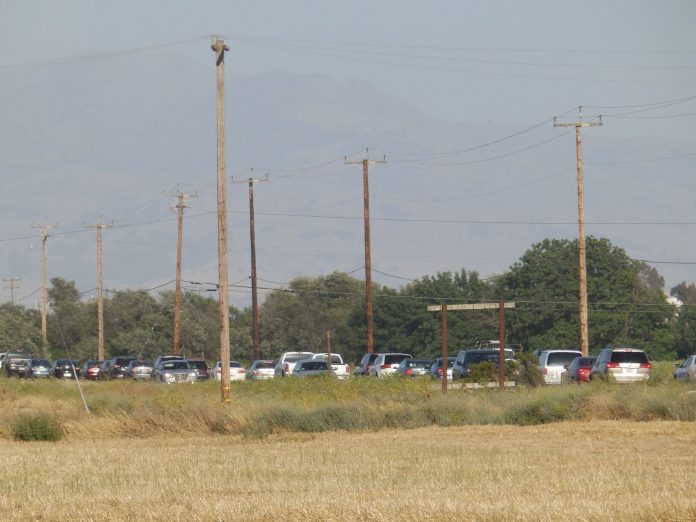
The Council of San Benito County Governments discussed a potential sales tax for roads and possible long- and short-term ways to respond to the recent fatalities on Highway 25 at their regularly scheduled meeting this week.
The proposed plan to widen Highway 25 to a four lanes from the San Benito County line to Hollister would cost about $300 million and the money is currently not available, according to officials.
COG directors this week unanimously approved a work plan that will allow staff officials to move forward with certain tasks related to seeking Caltrans’ approval of an amendment that would put widening Highway 25 on the list of constrained—or funded—projects on the already adopted 2014 Regional Transportation Plan.
In 2014, the San Benito County Board of Supervisors and Hollister City Council adopted resolutions asking COG to amend the plan and put widening Highway 25 on the constrained project list, according to background information in the meeting agenda packet.
At the meeting, Director Tony Boch, a San Juan Bautista councilman, brought up Mayor Ignacio Velazquez’s more short-term solution to the troublesome Highway 25 and 152 interchange, where there were two fatalities last year. Boch supported the mayor’s idea of installing an island between the lanes near that intersection, a decision that would make it more difficult for drivers to use the second lane appearing just before the interchange as a passing lane.
“I don’t agree with that,” said Director Victor Gomez, a member of the Hollister council.
Gomez suggested creating a longer two-lane area, which would allow slower moving vehicles—including tractors—to move to the right.
During the meeting’s public comment period, Hamdy Abbass, one of the co-founders of the “Stay Alive on 25” campaign, suggested reviving education campaigns.
“Just tell us what we need to do and maybe we can rally the public and do it again,” Abbass told the directors.
The “Stay Alive on 25” group collected more than 23,000 signatures in support of safety improvements, which its members ultimately delivered to locally elected state leaders and a representative with the governor’s office.
“We used to have signs,” Abbass said. “At least, we had four signs back then. There is only now one.”
Earlier in the same meeting, Velazquez and Eileen Goodwin, of Apex Strategies, expressed concern that reviving the “Stay Alive on 25” movement would not be enough.
“My concern about that is that amount of money is not going to do enough things on 25,” said the mayor, who added that this would make people “pretty angry.”
Goodwin agreed.
“We don’t want to over-promise because it’s all about delivery and that’s one of the reasons you’ve been so successful,” she said.
At that same meeting, Goodwin presented an alternative source of additional money for road improvements as she talked through the deadlines for putting a half-cent sales tax meant to benefit transportation on the ballot for 2016. The projected revenue over 20 years could be $120 million,” said Mary Gilbert, the interim executive director of COG.
The work plan for a potential transportation sales tax measure in the 2016 election cycle was approved unanimously.
Also appearing, California Highway Patrol Officer Herb Kellogg joined the discussion of Highway 25 during public comment and offered insights about the types of accidents there and why they occur in response to questions from the mayor.
According to records from the last two years, all fatal accidents on Highway 25 have been on the San Benito side of the county line shared with Santa Clara, Kellogg said. To date, three people have died on Highway 25 this year— with two of those fatalities occurring in the last week—compared to two people killed in the Highway 25 and 152 intersection last year, he explained.
“Obviously, three is greater than two and we still have six months to go,” the officer said.
Kellogg’s comments evolved into a back-and-forth exchange between the CHP officer and mayor. That could potentially violate provisions of the Brown Act public meetings law prohibiting extended exchanges between elected officials and speakers during public comment.
The mayor asked if the highway was still a double-fine zone or if it ever was, and Kellogg responded that it may have been, but that it would have been before his time.
Velazquez also asked Kellogg if the CHP had been issuing citations to drivers on the highway and the officer admitted to being “shorter staffed” than in years past. He added the department had just missed the cutoff for a deadline to apply for grants to fund additional enforcement on officers’ regular days off, but said he would “address that next year.”
“What can we do to help you?” asked the mayor.
“I think people just need to be educated,” Kellogg said, adding that people put others’ lives at risk when they drive recklessly.









